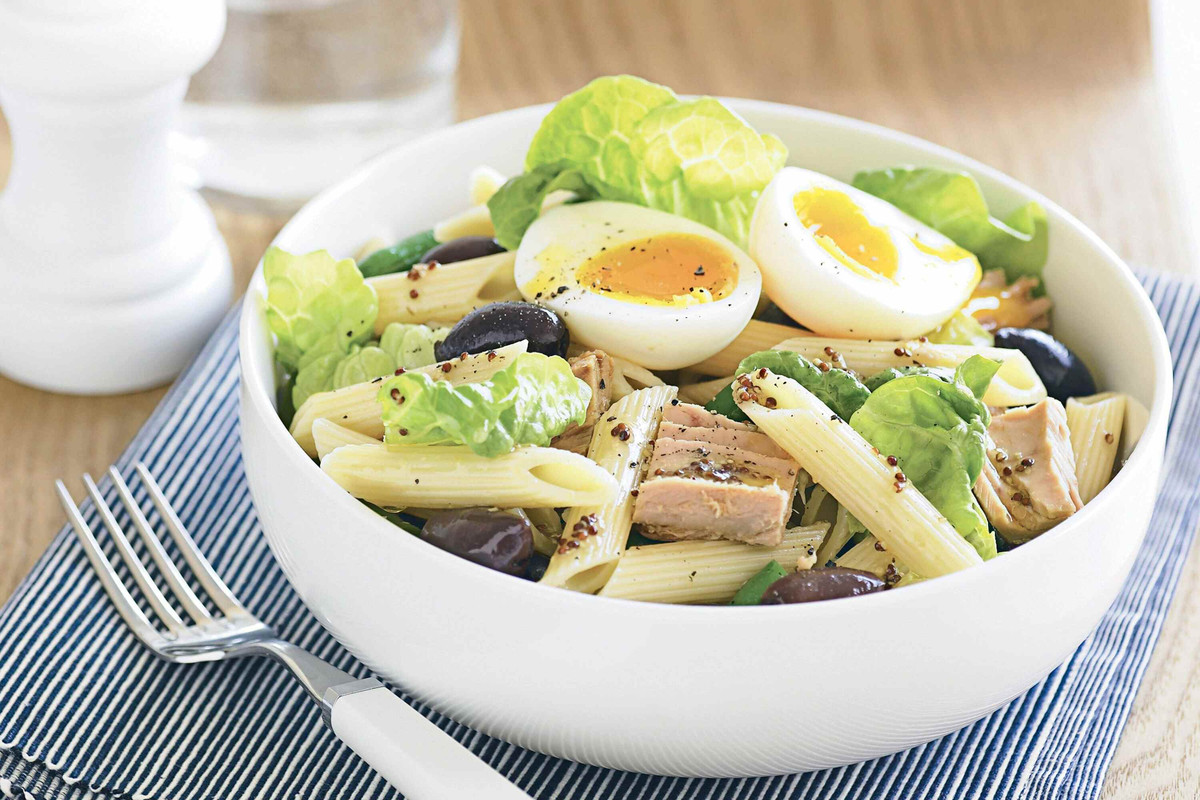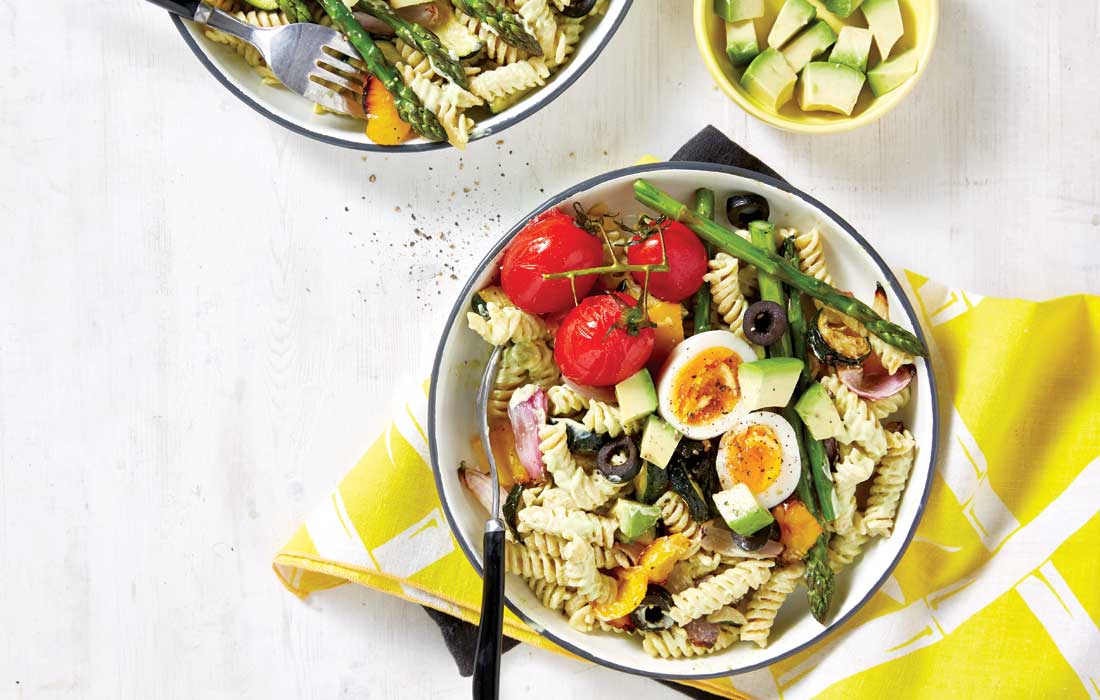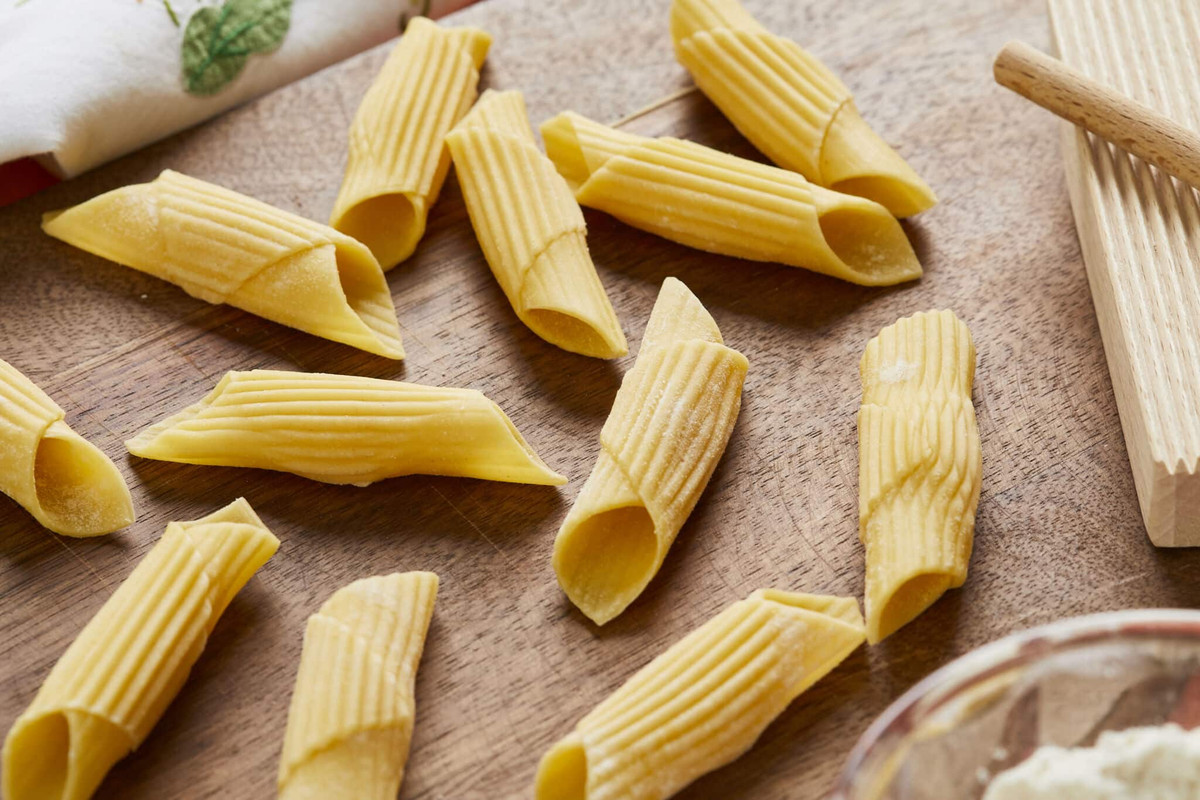There's something truly magical about making fresh egg pasta from scratch. I still remember the first time I successfully rolled out a silky sheet of dough; the feeling of pride was incredible. Far from being a difficult chef-level skill, making homemade pasta is an enjoyable project that fills your kitchen with warmth and your belly with incredible food. Today, I'm sharing my go-to fresh egg pasta recipe that will turn you into a pasta pro in no time.
The best part? You only need a handful of simple ingredients to create something far superior to anything from a box. This guide will walk you through every single step, from creating the perfect dough well to cooking your noodles to a tender, al dente perfection.
SIDE-BY-SIDE: PASTA FLOUR COMPARISON
| Flour Type | Best For | Texture & Quality |
|---|---|---|
| All-Purpose Flour | Beginners, easy access | Chewy, sturdy noodles; works wonderfully. |
| Italian "00" Flour | Authentic, delicate pasta | Silky, tender dough; finely milled for a smooth finish. |
| Semolina Flour | Added firmness | High in gluten; helps pasta hold its shape well. |
Why Make Fresh Egg Pasta at Home?

You might wonder why you'd make pasta when it's so easy to buy. Let me tell you, the difference is like night and day! Homemade egg pasta has a rich flavor and a wonderfully chewy, satisfying texture that dried pasta can't match. It's a fun cooking activity that’s perfect for a relaxing afternoon or a festive date night in the kitchen.
Plus, you have complete control over what goes into your food. Using simple, high-quality ingredients like good eggs and flour makes a noticeable difference in taste. Once you get the hang of it, you can create endless shapes and flavors, making it a truly versatile kitchen skill to master.
Ingredients for the Best Fresh Egg Pasta Recipe
The first step to success is gathering your ingredients. The beauty of this easy pasta dough is its simplicity. Here’s what you’ll need for about 4 servings:
-
300 grams (about 2 ¼ cups) of Flour: I recommend using Italian "00" flour for an authentic, silky texture, but regular all-purpose flour works beautifully too.
-
3 large eggs: These are the star of the show! Use the best quality, room-temperature eggs you can find. The yolks give the pasta its gorgeous golden color and rich flavor.
-
1 tablespoon of Olive Oil (optional): A splash of extra virgin olive oil makes the dough even smoother and adds a lovely flavor.
-
A pinch of salt: This seasons the dough from the inside out.
Pro Tip: For an extra-rich and luxurious dough, you can use a mix of whole eggs and extra egg yolks.
My Step-by-Step Guide to Making Fresh Pasta Dough
Now for the fun part—making the dough! Don't worry if it feels awkward at first; it's all about the feel. Follow these easy steps for perfect pasta dough every time.

1. Creating the Well and Mixing
First, mound your flour on a clean work surface. I like to use a wooden board because it provides a little grip. Use your fist or the back of your hand to create a deep well in the center—this is where our wet ingredients will go.
Crack the eggs into the well and add the olive oil and salt if you're using them. With a fork, gently beat the eggs together as if you're scrambling them. Then, slowly start to pull flour from the inner walls of the well into the eggs. Take your time here! The goal is to avoid a runaway egg river. Keep mixing until a thick, pasty batter forms.
2. Kneading to Perfection
Once the dough becomes too thick for a fork, it's time to use your hands. Bring all the flour and shaggy dough pieces together and start kneading. This is the most important step for achieving that perfect silky smooth pasta dough.
Push the dough away from you with the heel of your hand, then fold it back over itself, give it a quarter turn, and repeat. At first, the dough will feel dry and crumbly, but after about 8-10 minutes of kneading, it will transform into a smooth, elastic ball. If it’s too dry, wet your fingers with a little water. If it’s sticky, dust on a bit more flour. You'll know it's ready when you poke it and it gently springs back.
Also read :- Simple Garlic Parmesan Chicken Pasta Ingredients
3. The Essential Resting Time
Wrap your smooth dough ball tightly in plastic wrap and let it rest at room temperature for at least 30 minutes. This rest allows the gluten to relax, making the dough much easier to roll out later. This is the perfect time to clean up your station!
Rolling and Cutting Your Homemade Pasta

After resting, your dough is ready to be turned into beautiful noodles.
1. Dividing and Rolling the Dough
Unwrap the dough and cut it into four equal pieces. Keep the pieces you aren't using covered so they don't dry out. Flatten one piece into a small oval with your hands or a rolling pin.
Select the widest setting (usually #1) on your pasta maker. Feed the dough through. It might look a little rough, and that's okay! Fold the dough into thirds, like a letter, and run it through the same setting again. I do this 2-3 times to help create a neat rectangle.
2. Cutting the Pasta into Shapes
Lightly dust your beautiful pasta sheet with flour and let it air-dry for about 5-10 minutes. This prevents the noodles from sticking together later. Attach the cutter attachment to your machine (the fettuccine cutter is my favorite). Feed the sheet through the cutter and watch the magic happen!
Gather your noodles and dust them generously with semolina or flour. You can twist them into little "nests" or lay them out in loose piles on a floured baking sheet.
Cooking Your Fresh Egg Pasta to Perfection
Cooking fresh pasta is incredibly quick. Bring a large pot of water to a rolling boil and salt it generously—it should taste like the sea. Drop in your fresh pasta. Unlike dried pasta, it will cook in just 1 to 3 minutes.
The best way to know if it's done is to taste it! It should be tender but still have a slight bite (al dente). Use a tongs to transfer the pasta directly from the pot into your waiting sauce. This is a chef's secret: add a splash of the starchy pasta water to your sauce. It helps the sauce cling to the noodles beautifully.
Fresh Egg Pasta Recipe FAQs
Can I make pasta without a machine?
Absolutely! You can use a long rolling pin to roll the dough out as thin as possible. It takes more muscle, but Italian grandmothers have done it for generations!
How do I store fresh pasta?
You can keep uncooked pasta, well-floured, in the fridge for up to a day. For longer storage, freeze the noodle nests on a baking sheet, then transfer to a freezer bag. Cook directly from frozen, adding an extra minute to the cooking time.
My dough is too dry/crumbly. What happened?
This is common. Eggs vary in size. Simply spritz the dough with a little water from a spray bottle and continue kneading until it comes together.
What's the best sauce for fresh egg pasta?
Fresh pasta shines with simple sauces. Try it with a classic Marinara, a creamy Alfredo, or a simple drizzle of good olive oil and Parmesan cheese.
Making fresh egg pasta at home is a rewarding experience that brings joy to your cooking. I hope this guide encourages you to try it. Once you taste your own homemade noodles, you'll be hooked! What will you serve with your first batch of homemade pasta? Let me know in the comments









